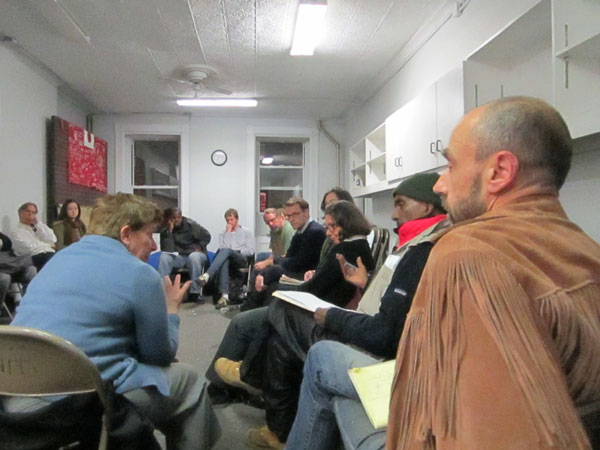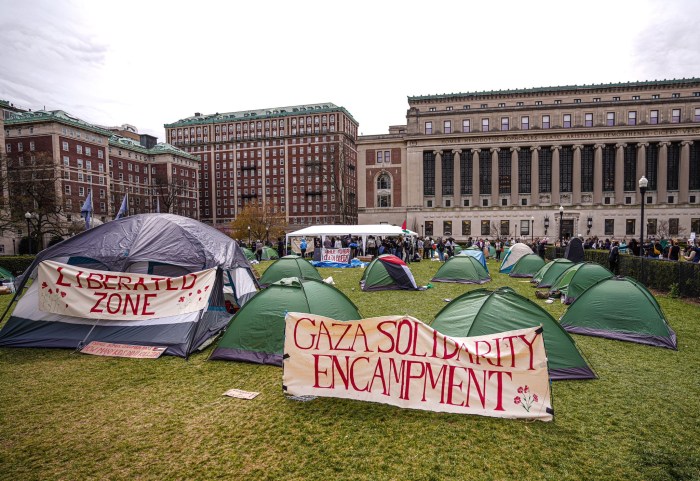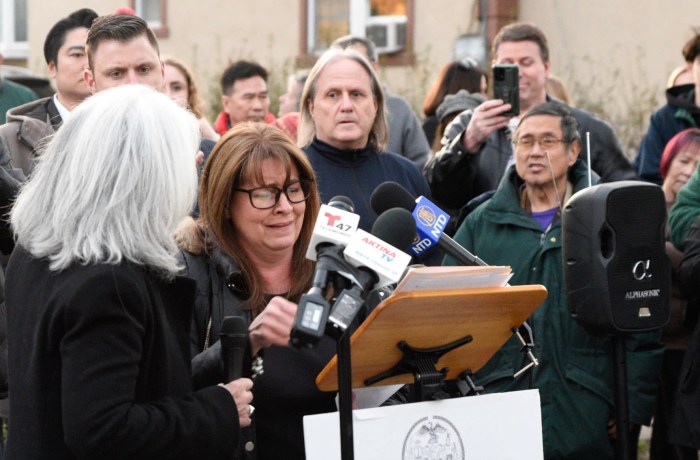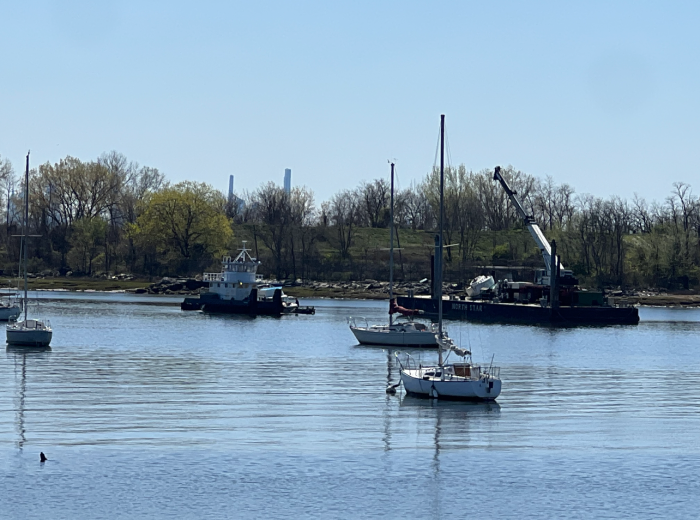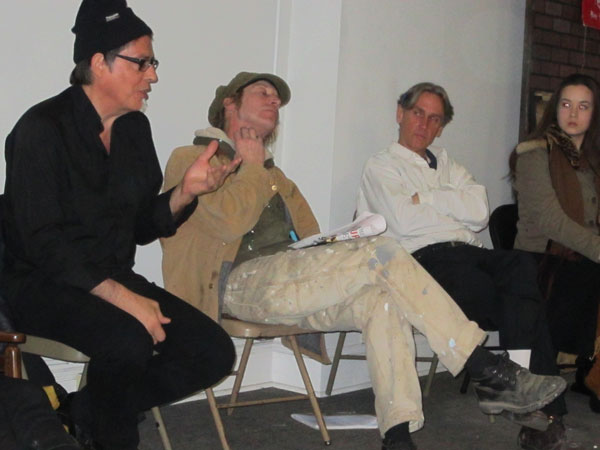 [/media-credit]
[/media-credit]
- Frank Morales, above left, and Eric Rassi, second from right, co-led the brainstorming session. Below, C.B. 3 District Manager Susan Stetzer, left, and David Subren discussed a point, as Steve Sinclair, in fringed jacket, and others listened.
By LINCOLN ANDERSON | Saying the East Village has been too long without its community center, a group of about 20 activists and former squatters brainstormed last Friday evening on ideas for how to get access to space in the vacant old P.S. 64 on E. Ninth St.
The decommissioned school building, just east of Tompkins Square Park, was home to CHARAS/El Bohio Cultural and Community Center until 2002, when it was evicted by new owner Gregg Singer, who bought the property for more than $3 million at a city auction in 1998. Yet, 13 years later, the old school building remains empty.
In March 2004, the developer unveiled plans for a 23-story university dormitory tower on the site, sparking neighborhood outrage. Eight months later, he returned with a plan for a 19-story tower that preserved the old school’s E. Ninth St. facade, but the community opposition didn’t lessen.
In June 2006 the community and former Councilmember Margarita Lopez succeeded in getting the city to landmark the old school, of which Yip Harburg, who wrote the lyrics to “Somewhere Over the Rainbow,” was one of a number of alumni who made it big in show business.
But in August 2006, using a pre-existing permit, Singer lopped off the building’s exterior architectural details as part of a ruthless try to overturn the landmarking. His lawyer at the time bluntly likened the exterior demolition to “scalping” the building.
At the same time, Singer pledged to turn the old P.S. 64 into the “Christotora Treatment Center,” offering temporary housing for the homeless and ex-convicts, supportive housing for people with H.I.V./AIDS and services for the mentally ill, substance abusers and “troubled youth,” as he put it.
Singer’s most recent plans have been to try to use the existing building for university housing and facilities, but again, there’s seemingly been no movement.
Former squatter Eric Rassi had the idea to convene the meeting, which he said would be followed by a larger one in a few weeks. Rassi offered what he called a rudimentary proposal: Call Singer and ask that he give them use of the first two floors of the building, with the ground floor being used for a democratically run community center and the second floor for an assortment of 25 nonprofit tenants.
“Everybody in the community has an interest in that building,” Rassi said. “A community needs a community building that anyone can belong to.” Rassi said the community center would be run by an elected board of directors.
The question of how much rent Singer would demand was raised.
Barbara Caporale, however, expressed frustration with the direction of the discussion by the group, which Rassi described as “the Lower East Side squatters and general political organizers.”
“Reinventing the wheel. I’m sorry, but I’ve been through this before,” Caporale said before getting up to leave.
She said previous groups, like DAG 64 (Development Advisory Group 64) and A.P.C.C. (Armando Perez Community Center) had already done a lot of work on these issues several years ago.
Mary Round, a 37-year East Village resident, said she had expected something different at the meeting.
“The reason I came here was because I thought we were going to occupy the building,” she said.
Asked later if she had been prepared to occupy the old P.S. 64, she said, “I was considering it. I thought the meeting was to discuss the possibility of seizing and occupying the building with 300 people.”
Jim, who gave his last name as Anonymous, said the community has to end its fixation on getting back the old CHARAS building.
“These are different times,” he said. “It’s not 20 or 30 years ago. It’s not the same community. Move on.”
In response, Rassi noted that, in fact, he’d also mentioned the possibility of trying to find other buildings in the area for use as a community center. Someone mentioned the idea of refocusing efforts on finding such a location in the Seward Park Urban Renewal Area (SPURA), south of the Williamsburg Bridge.
Former squatter Frank Morales, who co-led the meeting with Rassi, later said, “As for the plan for CHARAS, I don’t have one set notion, other than the need to involve the local community in the running of the place. As for Singer and what he will or won’t accept, I still believe in the power of the people organized effectively in creating new situations and possible avenues of negotiation. The meetings are an attempt to begin to galvanize that support.”
Singer did not respond to a call for comment by press time.



